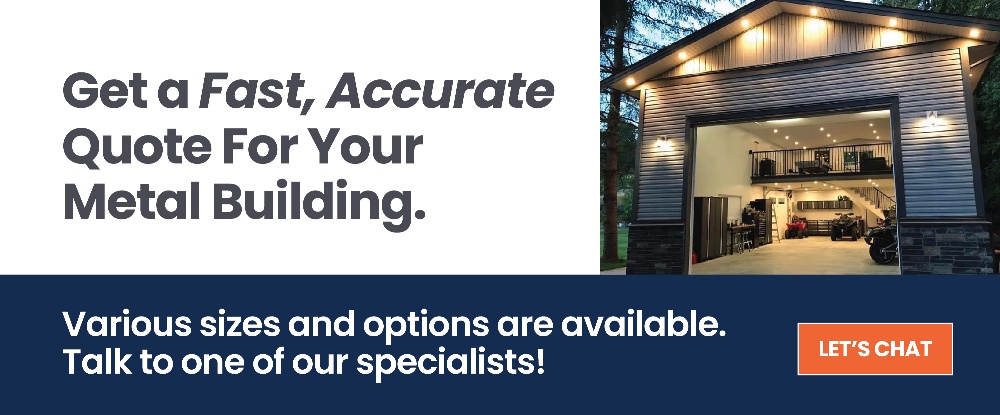How Much Does a Metal Barn Cost?
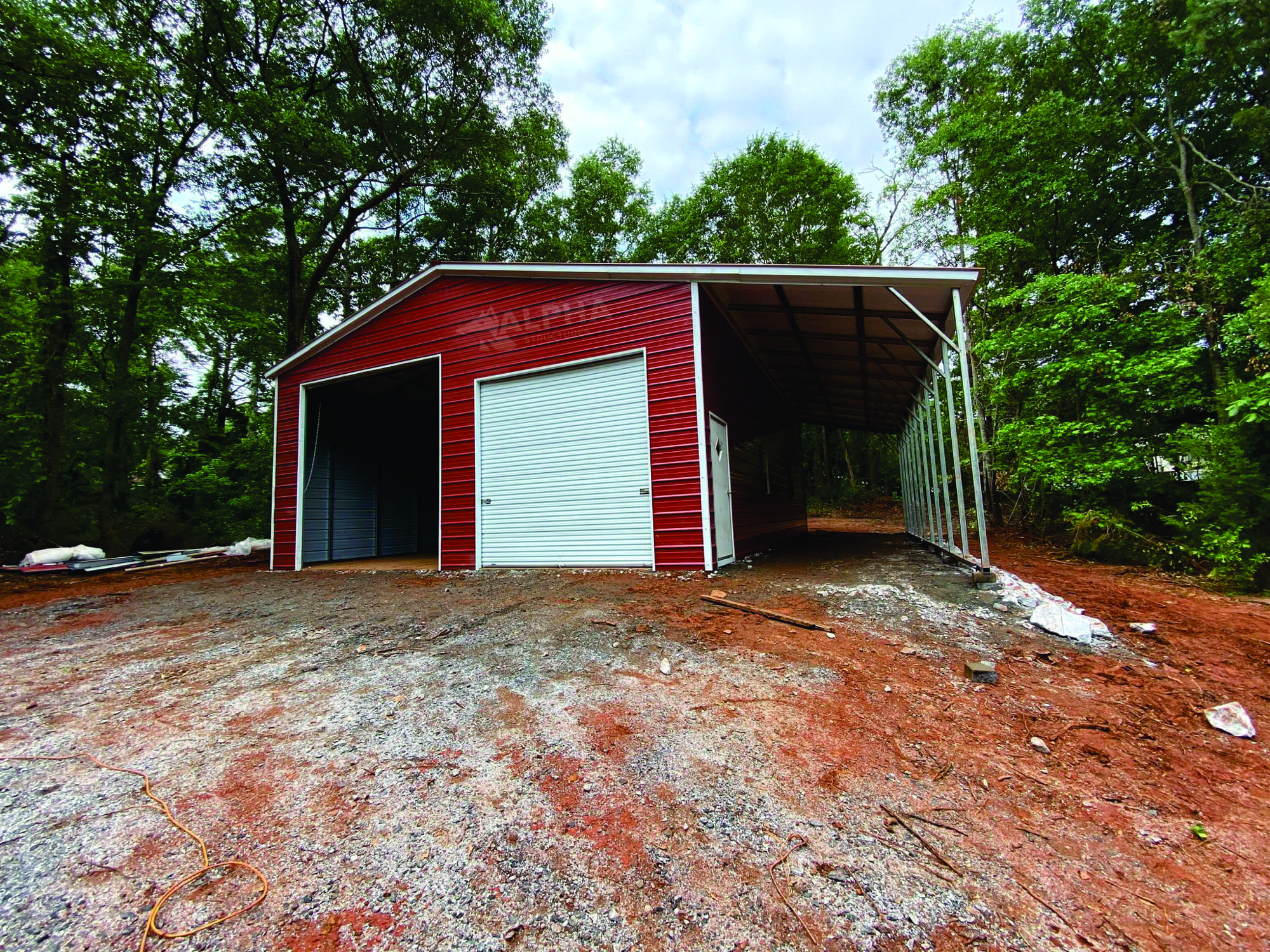
When you hear the word barn, do you immediately associate it with farming or agriculture?
Barns can shelter livestock or store the season’s harvest, but these buildings are not limited to agricultural use. A barn also can provide personal storage and workspace like a garage, thus adding value to your property.
Which type of barn should you choose? There are different styles, and metal and wood options are available. Both of the latter provide shelter and storage but deciding between the two comes down to your goals, budget, application, and personal preference.
Metal barns provide some inherent advantages over wood. Today’s steel barns offer all that a wood barn can offer at a lower price point, with higher durability and reduced maintenance. You can design your steel barn to suit your needs and choose from a variety of colors, facades, shapes, and sizes.
Types of Metal Barns
Two basic metal barns are available: arch-style steel barns and rigid-frame steel barns.
Arch-style barns, also known as Quonset huts, are durable, affordable, and easy to assemble. But their rounded construction offers less square footage than rigid-frame steel barns. When ample storage and headspace are the goals, a rigid-frame steel barn is a better choice.
A rigid-frame steel barn presents more usable space and ample headspace. These prefab buildings withstand strong winds and heavy snow loads, offering up to 300 feet of clear span space.
Rigid-frame steel buildings come in a variety of sizes, from small metal barns the size of a single-car garage to large metal barns with stalls for horses and livestock, metal barns with living quarters on the second floor, or even spacious horseback riding arenas.
Benefits of Steel Barns
When comparing wood and metal barns, the latter offers some distinct advantages.
Durability: A metal barn is durable and lasts for many years. These buildings resist pests and rot and can stand up to extreme weather. Wood cracks and rots in harsh weather, as well as attracting pests. The shingled roofs of wood buildings require constant repair, while the metal roofs of prefabricated steel barns eliminate shingle repairs.
- Better Value: A steel barn’s price is about one-third of a wood barn’s, with lower maintenance costs over its lifetime. Wood barns are more expensive to build and maintain than their metal counterparts. A metal barn averages $14 a square foot to build, compared to $35-$65 per square foot for a wood barn.
- Flexibility: Manufacturers can customize your metal barn and cost-effectively help it grow with your operation. The same changes to a wood barn would take more work and cost more. You can design a metal barn to serve multiple purposes, from equipment storage to housing livestock. You can add doors and windows for access and airflow, places to store food and supplies, and stalls.
- Maintenance: A steel barn resists termites and other destructive pests while a wood barn attracts termites and other pests, requiring regular pest control. Wood buildings also require repainting and new shingles. While metal buildings also degrade, the need to prevent rust and corrosion is minimal. Steel barns never need painting or staining, and there are no loose boards to deal with.
- Safety: Metal barns stand up to strong weather, like rain, snow, wind, and seismic events. The steel used in metal buildings is noncombustible, meaning it protects animals and equipment from fire.
- Build Time: The construction of a metal barn requires special tools and a knowledgeable expert, but most metal barns go up in a day or two. Even the largest of structures will only take about a week to construct. A wood barn can take months.
- Cleanliness: Metal barns look attractive and keep animals healthy. The steel used in prefabricated metal buildings cleans easily with a pressure washer and mild cleaning solution. It dries quickly, which prevents mold and mildew growth. You can power wash a wooden barn, but the dry time is longer, and you must seal interior walls to prevent mildew and rot.
- Eco-friendly: Steel is one of the most recycled materials on earth. You can buy steel barns constructed from recycled materials.
What’s the Price of Metal Barns?
The cost of your metal barn will vary depending on its design.
A common design is a barn divided into two or three sections: the main center section with a section on the right and left. This barn design costs more than a smaller single-section design. A clear span of 40 feet will cost less than an 80-foot clear span.
A metal barn costs $10,000 to $20,000 for a 12- to 20-foot-wide barn; $25,000 to $30,000 for a 26-foot to 30-foot-wide metal barn; and over $40,000 for a commercial size barn. Windows and doors, electrical and plumbing are extra costs.
Wood barns cost $45 to $65 per square foot to build. That price does not include electrical or plumbing. However, you can purchase preassembled wood barn kits for around half the price.
Insulation adds to the price of a metal barn. The increase in price depends on the insulation you choose, who does the installing, the building size, and the areas within the building you will insulate.
The cost of spray foam insulation averages $1 per-square-foot per inch of thickness. One-inch of spray foam offers around an R-7 insulation value. Getting to an R-25 insulation value requires at least 3.5 inches of spray foam at a price of $3.50 per square foot. With fiberglass insulation, an R-25, 8-inch-thick batt averages .85 cents per square foot.
A metal barn meets all the needs of a wooden barn. It can shelter livestock and store your harvest while adding value to your property. But unlike wooden barns, a steel barn costs less upfront and requires less maintenance over its lifetime.
Comments
Recent posts
-
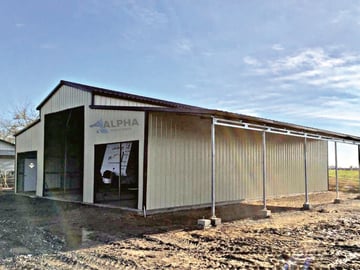
 4 REASONS WHY STEEL STORAGE BUILDINGS OUTPERFORM WOOD GARAGES
A metal garage is the greatest way to ensure that your automobiles and workplace...
December 11, 2022
4 REASONS WHY STEEL STORAGE BUILDINGS OUTPERFORM WOOD GARAGES
A metal garage is the greatest way to ensure that your automobiles and workplace...
December 11, 2022
-
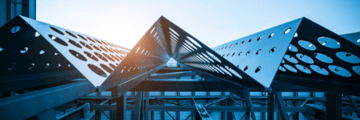
 Top 7 Uses for a Small, Attractive Commercial Metal Building
You know that old saying, "size doesn't matter?" Well, that rings true for comme...
December 11, 2022
Top 7 Uses for a Small, Attractive Commercial Metal Building
You know that old saying, "size doesn't matter?" Well, that rings true for comme...
December 11, 2022
-
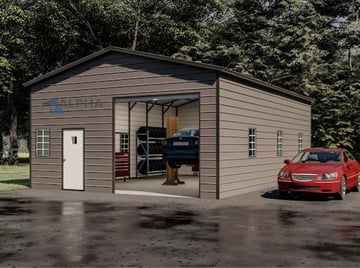
 Do Steel Storage Buildings Add Home Value: 7 FAQ Answered
Adding a garage to your property is one of the smartest investments you can make...
November 28, 2022
Do Steel Storage Buildings Add Home Value: 7 FAQ Answered
Adding a garage to your property is one of the smartest investments you can make...
November 28, 2022


